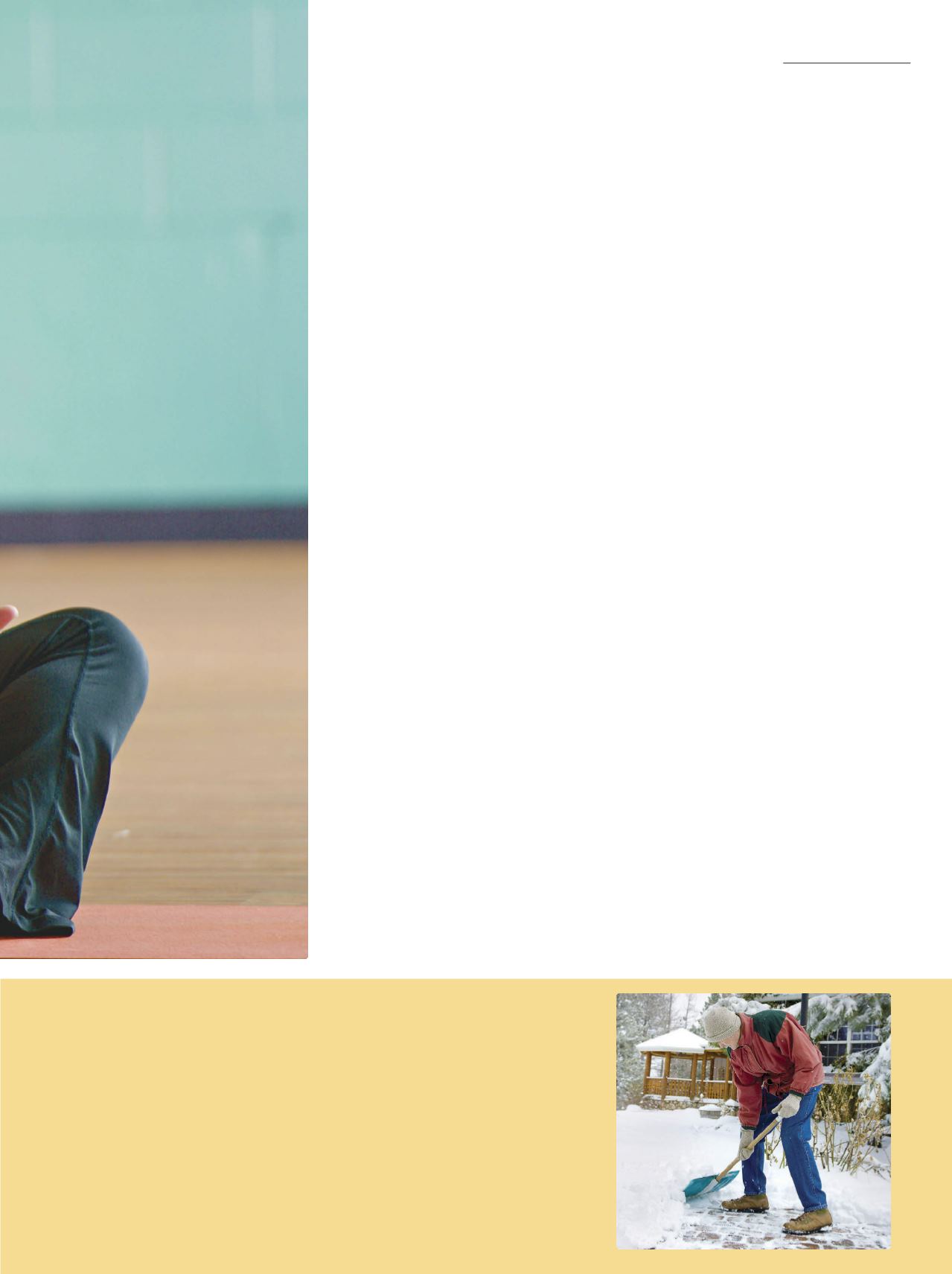

4 for Your Heart
T HE S E S A F E GUA RD S MAY
SUR P R I S E AND D E L I GH T Y OU
Protecting your
heart
is serious
business. But keeping it healthy
can be easier—and a lot more fun—
than you may think possible. Here
are four relatively simple steps to
help you take care of your ticker:
1
Keep your chin up.
A posi-
tive attitude may help boost
cardiovascular health, accord-
ing to research published by the
American Heart Association (AHA).
You can focus on the good things
happening in your life by keeping a
gratitude journal—write down any-
thing, large or small, that makes
you smile. And when things don’t
go your way, make a conscious ef-
fort to look for the silver lining.
2
If you have chocolate, go dark.
Studies have shown that
chocolate—the darker the better—
may help lower blood pressure. But
if you eat it, do so in moderation.
It’s a high-calorie food, and being
overweight is hard on your heart.
3
Have a good, long laugh.
Funnily
enough, laughter really is good
medicine. According to the AHA, it
gets more oxygen into your blood,
activates your muscles, quickens
your pulse, stimulates your circula-
tion and helps you relax.
So spend time with a friend or
loved one who knows how to crack
you up. Or find books or movies—or
even crazy cat videos on the Inter-
net—that tickle your funny bone.
4
Get your ZZZs.
Poor-quality
sleep may raise your blood
pressure and increase your risk for
heart disease.
To sleep better:
◗
◗
Set a bedtime and stick to it.
Do your best to go to bed at the
same time every night and wake
up at the same time every morn-
ing—even on the weekends.
◗
◗
Try to get 30 minutes of natural
sunlight a day, especially in the
morning.
◗
◗
Make your bedroom comfortable—
remove distractions like the TV,
computer or cellphone. And keep
the temperature cool.
◗
◗
Have a relaxing bedtime routine,
such as reading or taking a warm
bath.
Additional sources: Mental Health America;
National Institutes of Health
activities you can do out in the cold.
And keep these tips in mind:
◗
◗
Wear layers of clothing, including
a hat or scarf and warm gloves
and footwear.
◗
◗
Don’t drink alcohol before head
ing outside—it causes you to lose
body heat more quickly.
◗
◗
Work slowly and avoid sudden
exertion.
◗
◗
Watch out for symptoms of
hypothermia, such as confusion,
slowed reaction time, loss of coor
dination, sleepiness and shivering.
Sources: American Heart Association;
Centers for Disease Control and Prevention
HEART HEALTH

















